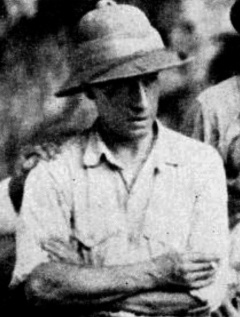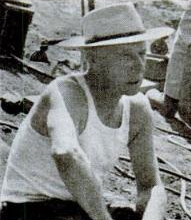
This blog launched on the first of August, 2014. It was not a big year blog-wise, but I still managed to put out eleven posts (one of which I’ll return to later this year). Worried I would run out of ideas, I devised “Twenty Writers, Twenty Books,” a series where I discuss the books and authors that have left a deep impression on me. (So far, I’ve only managed to finish twelve of the twenty writers. To look at it another way, this writing project is still generating blog posts ten years later.)
Those last months of 2014, my focus was fixed on the finishing edits of Edward Teller Dreams of Barbecuing People, the first book I put out under Kindle Direct Publishing. The novel’s opening line (“The Petrenkos were barbecuing people”) was first typed by me in 1999. After fifteen years, countless drafts and rewrites, and a couple of near-misses with agents who were interested but couldn’t get behind the book, I gave up trying to find it a home. I even considered giving up on writing altogether. Thankfully, I reconsidered, put it on Amazon, and began working on my next novel. (The whole tortured history can be found at The Tusk.)
But my favorite blog post from that first year is without question “B. Traven, The Treasure of the Sierra Madre,” the first entry in my Twenty Writers series. Oddly, it’s one of the newer books on the list, in the sense that I had read it only a few years’ before (whereas most of the other books on the list I first read earlier in life). The book made an indelible mark on me. It made me think about why an author writes a book, not merely how—but I was doubly fascinated by the mystery surrounding the identity of its author.
It turns out that while the book and John Huston’s movie are incredibly well-known, the true identity of the author has been largely shrouded in mystery to this day.

I love a good literary mystery, and the mystery of B. Traven is one of the best of the 20th century. While researching the blog post, I read numerous online sources and articles, two books on the subject, and even scouring old editions of Treasure, including the rather optimistic (and rather incorrect) introduction to a 1963 Time-Life edition which declared the matter of his identity settled.
One notable outcome of the blog post was former Chief Executive of BBC Broadcast Will Wyatt reaching out to me via email in 2015. Wyatt wrote and developed the BBC documentary B. Traven: A Mystery Solved and its companion book The Man Who was B. Traven, titled The Secret of the Sierra Madre in the United States. (A transfer of the BBC show can be found on YouTube.) Wyatt’s gracious email pointed out that no one to date has refuted his theory of Traven’s identity. By utter coincidence, I had just weeks earlier discovered a copy of the UK edition in one of the last great used bookstores, Phoenix Books of San Luis Obispo. (I’ve long intended to write a post about The Man Who was B. Traven, but never followed through.)
Coincidentally, as I was writing this post in late December, Wyatt again reached out to me via public comment. He once more defended his work, but also challenged the other theories of Traven’s identity, most of which are based on speculation or hunches. Due to his comment, I’m updating the 2014 post to better explain Wyatt’s research, which was previously only alluded to briefly.
As I replied to him:
Perhaps not reading your book first was a mistake on my part, but I, a mere fan of Traven’s books, and writer of the occasional novel that does not sell in high volume, did not intend [the 2014] post to be the final word on Traven’s identity.
Rather, this post was intended to cover the breadth of the theories out there, farfetched or otherwise, and to give a general feel for Traven’s most likely background. I also wanted to explain why I find so much inspiration in Traven’s works, especially “The Treasure of the Sierra Madre.”
Alas, all this came too late for the original 2014 post, which relies on Michael L. Baumann’s B. Traven: An Introduction (1976). Baumann treats the question of Traven’s identity as a literary mystery, which lines up with my interests in the subject. As a German-speaking German-American, Baumann discerns that Traven’s work was most likely written in that language and then crudely translated to English for an American audience. He also offers a clear-eyed interpretation of the themes and political bent of Traven’s novels.
Since I wasn’t interested in proposing a candidate or “solving” the mystery, Baumann was a good primary source to work from. I only wish I could have delved more deeply into the breadth of the Traven theories proposed to date. The tornadic multiplicity of names and initials and pseudonyms linked to Traven is bewildering, fostered by Traven’s generous use of them to cover his tracks.
My fascination is not to keep the mystery alive, but to turn the mystery around and face the mirror at the reader, to give a name to the insatiable curiosity Traven inspired—to remind us there was a time when authors shunned publicity (“the creative person should…have no other biography than his works”) rather than relentlessly strove to build their personal brand.